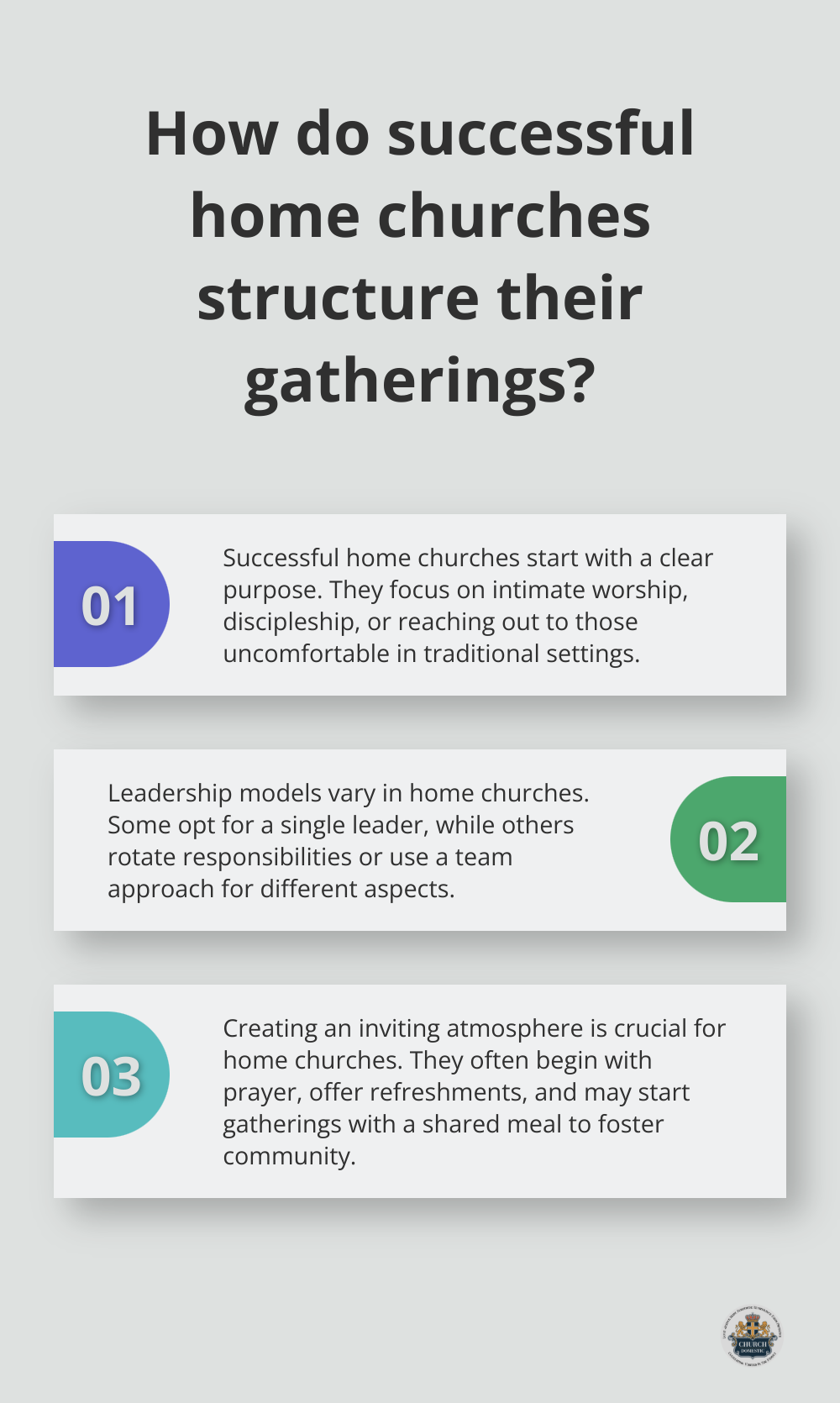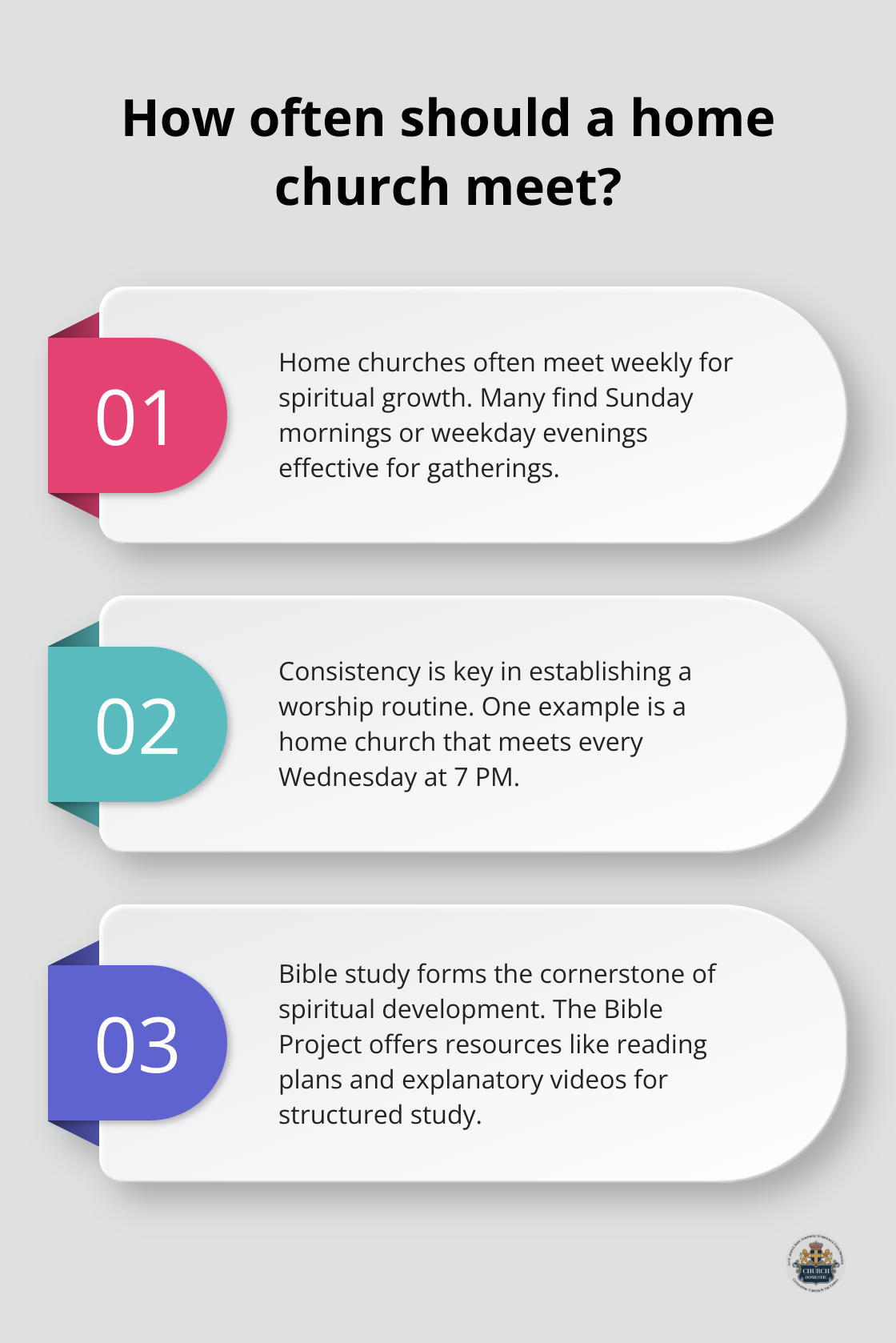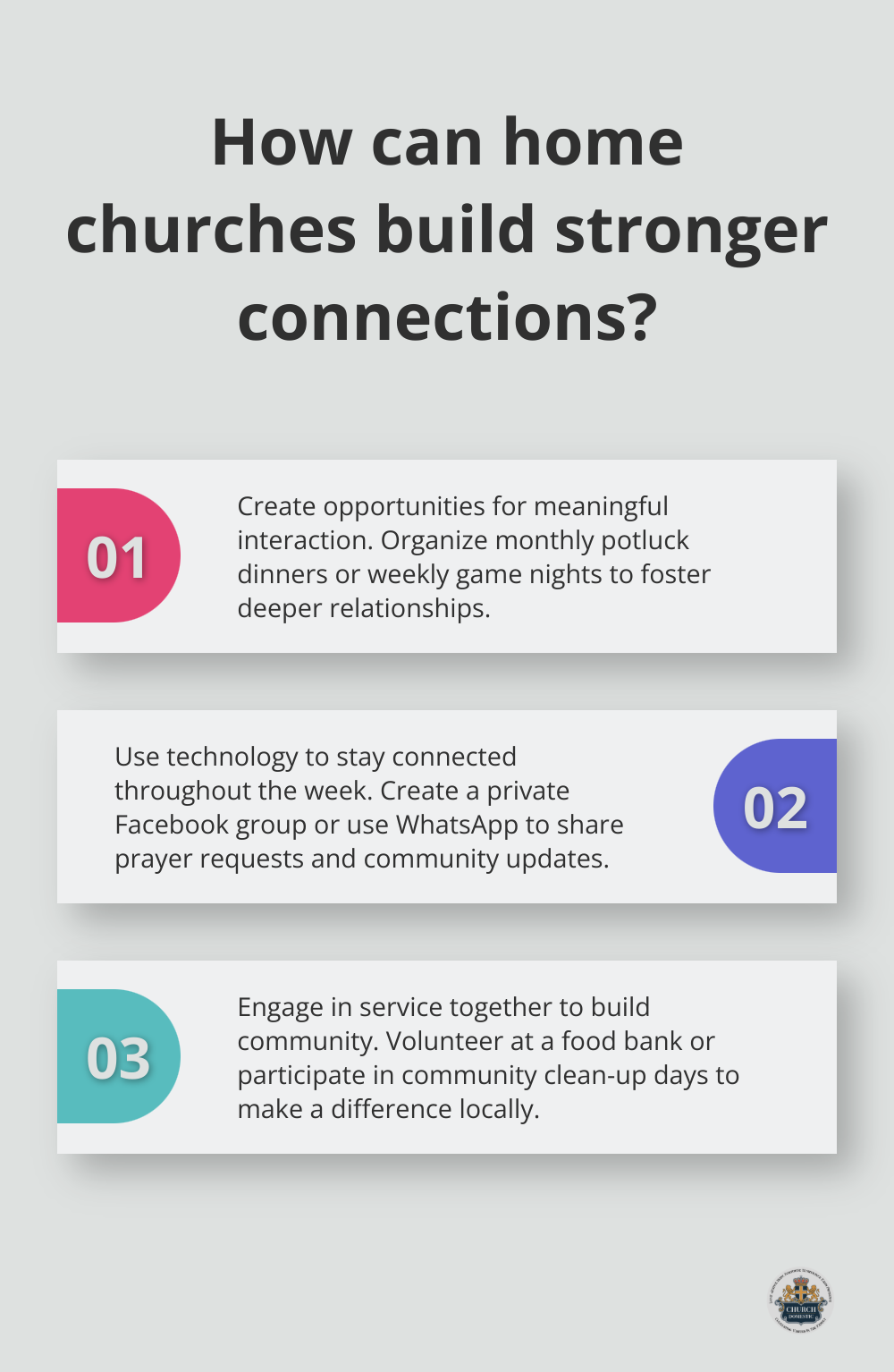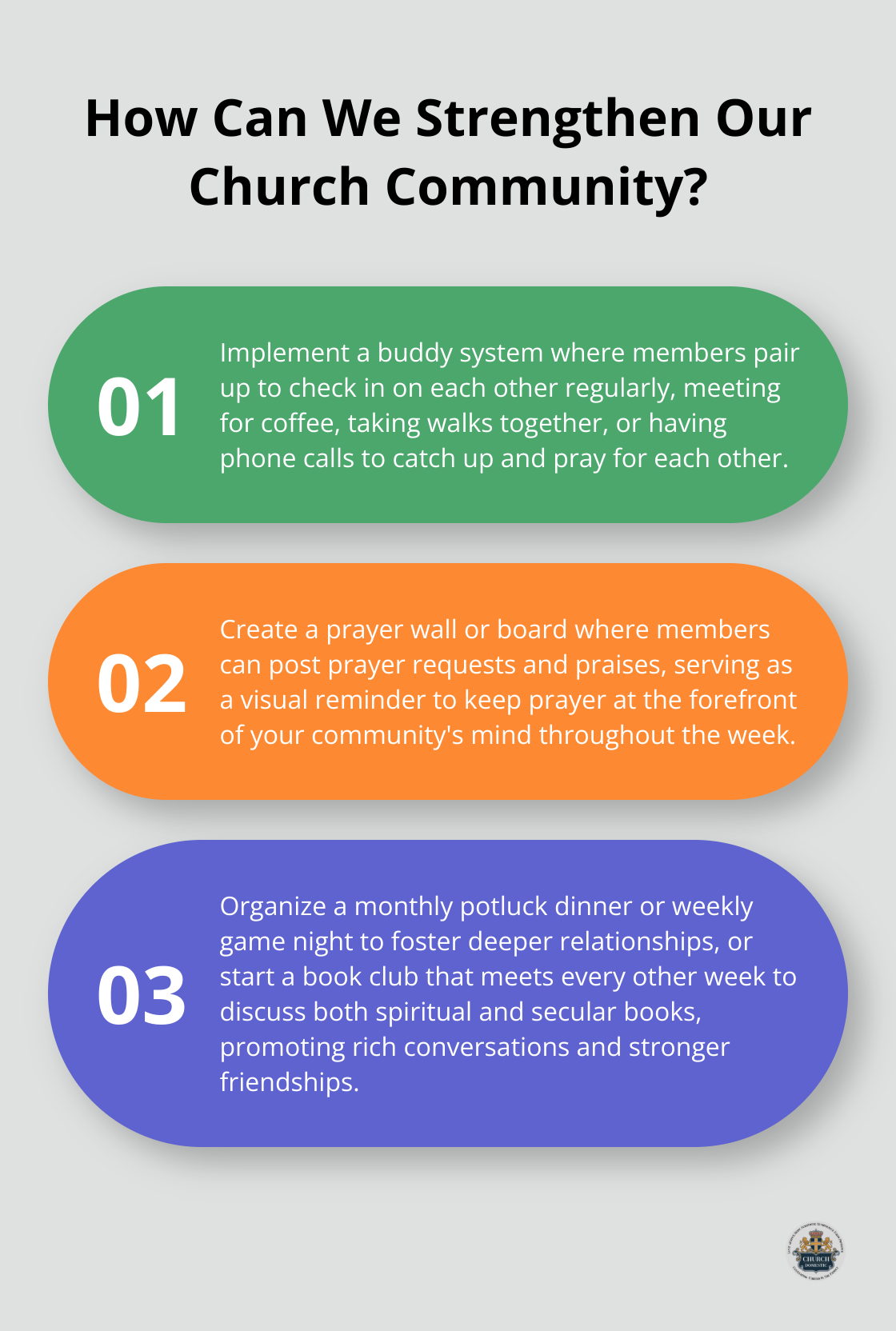At Church Domestic, we’ve seen a growing interest in home churches as people seek more intimate faith communities. The concept of a home church isn’t new, but it’s gaining fresh relevance in our fast-paced world.
Building a vibrant home church community requires intentionality, dedication, and a clear vision. In this post, we’ll explore practical steps to create a thriving home-based faith group that nurtures spiritual growth and fosters meaningful connections.
How to Build Strong Foundations for Your Home Church
Starting a home church requires careful planning and a clear vision. Many successful home churches have flourished, and key elements contribute to their success.
Clarify Your Purpose
Begin by laying the groundwork-pray for guidance, gather a small group of interested individuals from the church, and discuss your collective vision. Keep it focused on your purpose, whether it’s creating a more intimate worship experience, focusing on discipleship and spiritual growth, or reaching out to those who feel uncomfortable in traditional church settings. Your purpose will guide every decision you make moving forward.

For example, if your goal is to create a space for deep Bible study, you might structure your meetings around in-depth scriptural analysis and discussion. If community outreach is your focus, you could plan regular service projects and invite neighbors to participate.
Choose Your Leadership Model
Leadership in a home church can take many forms, but you must establish roles early on. You might opt for a single leader who guides the group, or you could rotate leadership responsibilities among members. Some home churches have found success with a team approach, where different individuals take charge of various aspects (like worship, teaching, and hospitality).
Whatever model you choose, make sure it aligns with your group’s skills and comfort levels. If you’re unsure, start with a simple structure and adjust as your community grows and evolves.
Create an Inviting Atmosphere
Creating a house church in your living room space starts with spiritual preparation. Before you open your doors, spend time in prayer. Ask God to guide you and help you create an environment that fosters community and encourages interaction and comfort.
Don’t underestimate the power of hospitality. Simple gestures like offering refreshments or having blankets available can make people feel at home. One home church always starts their gatherings with a shared meal, which has become a cherished part of their community life.
The goal is to create a space where people feel free to be themselves and connect with others. This might mean decluttering your living room or setting up in a garage or backyard if you have a larger group.
Establish Clear Communication Channels
Effective communication is the lifeblood of any community, especially a home church. Set up reliable methods for sharing information, updates, and prayer requests. This could include a group messaging app, a weekly email newsletter, or a private social media group.
Encourage open dialogue and create opportunities for members to share their thoughts and ideas. Regular check-ins can help you stay attuned to the needs and desires of your group, allowing you to adapt and grow together.
As you lay these foundational elements, you’ll set the stage for a thriving home church community. The next step is to focus on nurturing spiritual growth within this intimate setting.
How to Nurture Spiritual Growth at Home
Nurturing spiritual growth in a home church setting requires intentionality and consistency. Small, daily practices often lead to significant spiritual development over time.
Create a Consistent Worship Routine
Establish a regular worship schedule for your group. Choose a time that works for everyone and maintain it. Many home churches find Sunday mornings or weekday evenings effective. For example, one home church meets every Wednesday at 7 PM, which has become a cherished midweek spiritual recharge for their members.

Don’t replicate a traditional church service. Instead, focus on elements that resonate with your group. This might include singing worship songs, reading scripture aloud, or sharing testimonies. One family starts their worship time with a simple candle-lighting ritual (symbolizing God’s presence in their midst).
Study Scripture Deeply
Bible study forms the cornerstone of spiritual growth. Use a structured Bible reading plan to guide your group through scripture. The Bible Project offers excellent resources for this, including reading plans and explanatory videos.
Promote active participation by using discussion questions or having members take turns leading the study. The Swedish Method proves effective for many groups. Participants mark the text with a question mark (for things they don’t understand), an exclamation point (for things that stand out), and an arrow (for personal applications).
Make Prayer a Priority
Prayer plays a vital role in spiritual growth. Incorporate various prayer practices into your home church gatherings. This could include silent meditation, group prayer, or prayer journaling.
Create a prayer wall or board where members can post prayer requests and praises. This visual reminder keeps prayer at the forefront of your community’s mind throughout the week.
Encourage Personal and Family Devotions
While group worship holds importance, personal and family devotions prove equally crucial. Urge members to establish daily quiet times. The YouVersion Bible app offers numerous devotional plans that fit easily into busy schedules.
For families, recommend resources like “The Jesus Storybook Bible” for young children or “The Action Bible” for older kids. These can make family devotions more engaging and accessible.
Spiritual growth takes time and patience. As you develop these practices, you’ll find your home church community growing closer to God and each other. The next step involves fostering deeper connections within your group and reaching out to the wider community.
How to Build Stronger Connections in Our Home Church
Create Opportunities for Meaningful Interaction
Organize regular activities that extend beyond your worship gatherings. A monthly potluck dinner or a weekly game night can foster deeper relationships. One home church started a book club that meets every other week to discuss both spiritual and secular books, which promotes rich conversations and stronger friendships.

Implement a buddy system where members pair up to check in on each other regularly. This approach can particularly help newcomers or those facing challenges. Encourage these pairs to meet for coffee, take walks together, or have a phone call to catch up and pray for each other.
Use Technology to Stay Connected
In today’s digital age, technology serves as a powerful tool for keeping your home church community connected throughout the week. Create a private Facebook group or use a messaging app like WhatsApp to share prayer requests, devotional thoughts, and community updates.
Use video conferencing tools like Zoom for virtual Bible studies or prayer meetings. This can help members who can’t always attend in person due to work schedules, health issues, or other commitments. A shared Google Calendar can coordinate meals for families with new babies or members recovering from surgery.
Engage in Service Together
Service builds community effectively. Find opportunities in your local area where your home church can make a difference. Volunteer at a food bank, participate in a community clean-up day, or partner with a local school to tutor students.
One home church group adopted a section of highway for regular clean-ups. This provided a tangible way to care for their community and gave them uninterrupted time to chat and bond while they worked.
Foster a Culture of Vulnerability
Try to create an environment where members feel safe to share their struggles and victories. Encourage open and honest communication during your gatherings. You might dedicate time in each meeting for members to share personal prayer requests or testimonies.
Consider implementing a “high-low” sharing time, where each person shares one high point and one low point from their week. This practice (which takes only a few minutes) can deepen empathy and understanding within the group.
Celebrate Together
Make an effort to celebrate important milestones and events in your members’ lives. This could include birthdays, anniversaries, graduations, or other significant achievements. These celebrations (both big and small) reinforce the sense of family within your home church community.
Final Thoughts
Home churches offer unique opportunities for spiritual growth and deep connections. These intimate faith gatherings provide a space for authentic relationships, personalized worship experiences, and hands-on discipleship. Starting and maintaining a home church presents challenges, but open communication, flexibility, and commitment to a shared vision help overcome obstacles.

We encourage you to take the first step if you consider starting a home church. Gather a small group of like-minded individuals, discuss your shared vision, and commit to regular meetings. As you move forward, support and resources are available to help you navigate this journey.
At Church Domestic, we provide information and insights to help you navigate family life, business, and community building. Your home church has the potential to become a powerful force for spiritual growth and positive change in your lives and the lives of those around you (including your neighbors and friends).